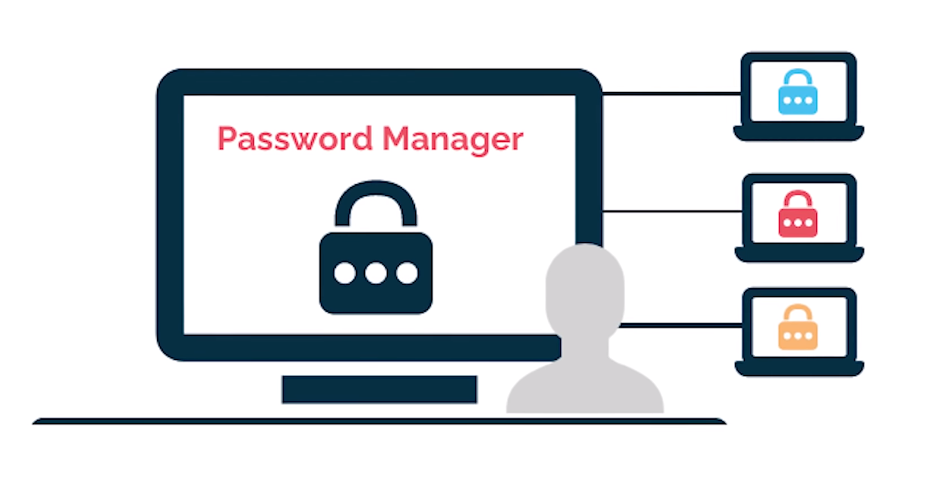Introduction
Data at rest security is an essential aspect of data protection that is often misunderstood. Many people have misconceptions about what it is, how it works, and what it can do. In this article, we will explain the top misconceptions about data at rest security and clarify what you require to know to keep your data safe.
What is Data at Rest Security?
Data at Rest Security refers to the measures to protect data stored or saved on a device, server, or other storage medium. This can include sensitive personal, financial, or health data. Data at Rest Security measures can include encryption, access controls, and physical security measures such as locked cabinets or secure data centers. Data at Rest Security aims to prevent unauthorized access, theft, or loss of data while it is not being actively used or transmitted.
Common Misconceptions about Data at Rest Security
Data at Rest is Safe from Cyberattacks
Data at rest is not completely safe from cyberattacks. While it may be less vulnerable than data in transit or use, it can still be targeted by cybercriminals looking to steal or compromise sensitive information. This is why it is imperative to implement strong security actions such as encryption and access controls to protect data at rest from unauthorized access.
Data at Rest Security is Unnecessary for Small Businesses
It is a misconception that data at rest security is unnecessary for small businesses. Small businesses are just as susceptible to cyberattacks as larger organizations. This is because cybercriminals often target small businesses. After all, they may have weaker security measures. Implementing data-at-rest security measures such as encryption and access controls can help protect sensitive information from being compromised or stolen. Small businesses need to prioritize cybersecurity and take steps to protect their data at rest.
Password Protection is Enough to Secure Data at Rest
While passwords are important to securing data at rest, they are not enough. Passwords can be easily guessed or stolen through phishing attacks or other methods. It is important to implement additional security measures such as multi-factor authentication, encryption, and access controls to ensure the safety of sensitive data. Additionally, it is important to regularly update passwords and ensure they are strong and unique for each account. Small businesses can better protect their data by implementing a multi-layered approach to security.
Hard Drive Erasure Guarantees Data Erasure
Many believe that simply erasing or reformatting a hard drive will completely erase all data. However, this is a misconception. While erasing a hard drive can make it more difficult to recover data, it is not a foolproof data erasure method. Sophisticated data recovery tools can still retrieve information from a hard drive that has been erased or reformatted. To ensure complete data erasure, it is recommended to use specialized data erasure software or physical destruction methods.
Physical Security is Enough to Protect Data at Rest
Many believe that physical security measures, such as locking up their computer or storing their hard drive in a safe, are enough to protect their data. However, physical security measures are insufficient to protect data from theft or unauthorized access. Hackers can still gain access to data by exploiting software vulnerabilities or using social engineering strategies to trick users into giving up login credentials. In addition to physical security measures, it is important to implement strong passwords, encryption, and other technical safeguards to protect data at rest. Using strong passwords and multi-factor authentication is one way to defend data at rest. This can thwart hackers from gaining access to data even if they manage to breach physical security measures. It is also important to use encryption to protect sensitive data. Encryption can prevent unauthorized access to data by rendering it unreadable without the decryption key.
The Top Ways to Secure Data at Rest
Here are some top ways to secure data at rest:
1. Use strong passwords and multi-factor authentication: Strong passwords and multi-factor authentication can prevent unauthorized access to data even if physical security measures are breached.
2. Encrypt sensitive data: Encryption can render sensitive data unreadable without the decryption key, preventing unauthorized access.
3. Implement access controls: Implementing access controls can limit who has access to sensitive data and prevent unauthorized access.
4. Regularly back up data: Regularly backing up data can ensure that data is not lost in a security breach or other disaster.
5. Use secure storage devices: Secure storage devices such as encrypted hard drives or secure cloud storage can provide additional security for data at rest.
By implementing these measures, organizations can better protect their data at rest and prevent unauthorized access or data breaches.
Primary Information Security Risk To Data At Rest
The primary information security risk to data at rest is unauthorized access or data breaches. Without proper security measures, sensitive data can be accessed by unauthorized individuals or cybercriminals, leading to potential data theft, financial loss, or reputational damage to the organization. Therefore, organizations need to implement security measures such as encryption, access controls, and regular data backups to protect their data at rest.
Wrong Way Of Securing Data At Rest

It may vary depending on the specific circumstances and requirements of an organization. However, some ineffective methods of securing data at rest include using weak passwords, relying solely on firewalls, and not regularly updating security measures. Organizations must assess their security needs and implement appropriate measures to protect their data.
Best Practices for Data at Rest Security
Maintain an Inventory of Data
Maintaining a data inventory is a best practice for data at rest security. It helps organizations keep track of all their sensitive data and where it is stored, making it easier to implement security measures and identify potential vulnerabilities. However, it is important to mention that this should not be the only security measure in place, and other measures, such as encryption and access controls, should also be implemented.
Implement The Least Privilege Principle
Implementing the least privilege principle is another best practice for data security. This principle involves limiting access to sensitive data only to those who need it to perform their job functions. By implementing this principle, organizations can reduce the hazard of data breaches and unauthorized access to sensitive information. It is significant to regularly review and update access privileges to ensure that they are still necessary and appropriate for each user. Additionally, implementing multi-factor authentication can further enhance the security of sensitive data.
Stay Up-to-Date with Security Protocols
Staying up-to-date with security protocols is crucial for maintaining the security of sensitive data. This includes regularly installing software updates and patches and keeping security trends and threats up-to-date. It is also important to conduct regular security audits and risk assessments to identify and address potential vulnerabilities before they can be exploited. Organizations can better defend their sensitive data and prevent costly data breaches by proactively implementing security measures.
Limit the Use of Personal Devices for Work Purposes
To enhance data security, it is recommended to limit the use of personal devices for work purposes. Personal devices like smartphones, tablets, and laptops may not have the same level of security as company-owned devices, which can put sensitive data at risk. Suppose employees must use personal devices for work. In that case, it is important to establish clear policies and guidelines for their use, such as requiring the use of secure passwords, encryption, and remote wipe capabilities.
Train Employees on Data Security Awareness

To ensure the protection of sensitive data, it is crucial to train employees on data security awareness. This includes educating them on the importance of securing passwords, avoiding phishing scams, and identifying potential security threats. Regular training sessions can help employees stay up-to-date on the latest security threats and top practices for protecting sensitive data. Additionally, it is important to have a clear protocol for reporting security incidents or breaches to address them quickly and effectively. By prioritizing data security awareness and training, organizations can diminish the risk of data breaches and protect their sensitive information. In addition to employee training, it is also important to implement strong security measures like firewalls, antivirus software, and encryption tools. Regularly updating software and systems can also help prevent security vulnerabilities from being exploited.
Furthermore, organizations should consider implementing multi-factor authentication for accessing sensitive data and systems. This adds an extra layer of security beyond just a password, making it difficult for unauthorized individuals to gain access.
Conduct Regular Security Audits
To ensure that your organization’s security measures are effective, it’s important to conduct regular security audits. This involves reviewing your security protocols, identifying potential vulnerabilities, and addressing weaknesses.
During a security audit, you may also want to test your systems and processes to see how they protect against potential threats. This can help you recognize areas where additional security measures may be necessary.
Establish an Incident Response Plan
To ensure that your organization is prepared in the event of a security breach, it’s important to establish an incident response plan. This plan should outline your organization’s steps in a security incident, including who will be responsible for what tasks and how communication will be handled. Your incident response plan should also include procedures for identifying and containing the incident and for investigating and reporting the incident to the appropriate authorities. It’s important to regularly review and update your incident response plan to confirm that it remains effective and relevant. To create an incident response plan, you should start by identifying the security incidents most likely to occur in your organization. This could include data breaches, malware infections, or physical security breaches.
Next, you should identify the key stakeholders involved in the incident response process, including IT staff, security personnel, legal counsel, and senior management.
You can develop the incident response plan once you have identified the key stakeholders and potential incidents. This plan should outline the steps that will be taken in the event of a security incident, including who will be responsible for each step, how the information will be communicated, and what resources will be needed.
It’s important to regularly test and refine the incident response plan to safeguard it remains effective and up-to-date. This can involve conducting simulated security incidents and evaluating the response to identify areas for improvement.
Conclusion
Data at rest security is a critical aspect of protecting sensitive information. It is important to understand the common misconceptions about data at rest security, such as the belief that encryption alone is enough to protect data. It is also important to implement a comprehensive security strategy that includes multiple layers of protection, such as access controls, monitoring, and incident response planning. By staying informed and proactive, organizations can better safeguard their data and minimize the risk of a security breach.
In summary, best practices for data at rest security include understanding common misconceptions, implementing a comprehensive security strategy with multiple layers of protection, and staying informed and proactive. Encryption alone is not enough to safeguard data, and access controls, monitoring, and incident response planning are all important components of a strong security strategy. By following these practices, organizations can better safeguard their data and reduce the risk of a security breach.
Frequently Asked Questions (FAQs)
What is Data at Rest Security?

Data at rest security protects data stored in databases, servers, and other storage devices. This type of security aims to prevent unauthorized access, theft, or data loss while in a static state. It involves implementing encryption, access controls, and monitoring to ensure data confidentiality, integrity, and availability.
Why is Data at Rest Security Important?
Data at rest security is significant because it helps to protect sensitive information from unauthorized access, theft, or loss. This type of security is particularly critical for organizations that store large amounts of sensitive data, such as financial institutions, healthcare providers, and government agencies. Implementing data-at-rest security measures can help reduce the risk of data breaches, which can seriously affect individuals and organizations.
What are the Risks of not Securing Data at Rest?
Not securing data at rest can lead to various risks, such as unauthorized access, theft, loss, or corruption of sensitive information. This can result in financial losses, damage to reputation, legal obligations, and loss of customer trust. Not securing data at rest can lead to compliance violations, resulting in hefty fines and legal penalties. Therefore, organizations must implement robust data-at-rest security measures to mitigate these risks.
How Often Should Security Audits Be Conducted?
The frequency of security audits depends on various factors, such as the organization’s size, the sensitivity of the data being stored, and the regulatory requirements. However, it is generally recommended to conduct security audits at least once a year. More frequent audits may be required in some industries, such as healthcare and finance. It is also important to conduct audits whenever significant changes in the organization’s technology or infrastructure exist.
What is an Incident Response Plan?
An Incident Response Plan (IRP) is a documented plan that outlines the steps an organization will take in case of a security incident or breach. The plan typically includes procedures for identifying and containing the incident, assessing the damage, notifying the appropriate parties, preserving evidence, and restoring normal operations. The goal of an IRP is to minimize the impact of a security incident and ensure that the organization can quickly and effectively respond to the situation. It is important for organizations to regularly review and update their IRP to ensure that it remains relevant and effective.
